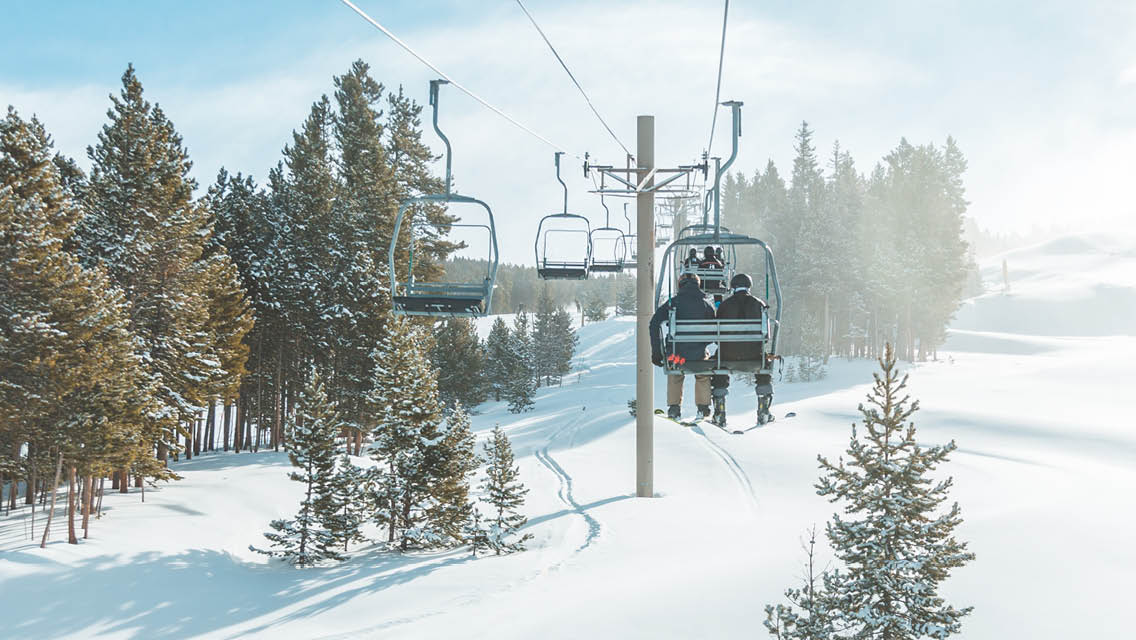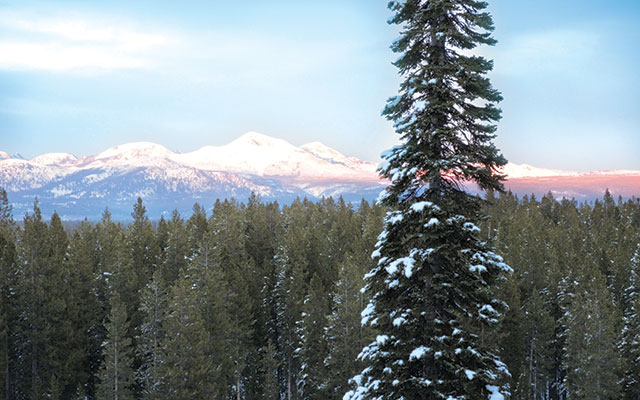Skiing downhill makes a lot of other things seem easy,” says 2018 U.S. Ski Team Olympian Alice Merryweather. “But there’s no feeling like going fast on a pair of skis.”
Skiing demands core and lower-body strength to withstand the forces of gravity, which are amplified by speed and motion. It also requires agility to react quickly to changing terrain, mobility to shift your weight on skis for efficient turns, and confidence to handle potentially scary situations.
One of the biggest pitfalls among amateur skiers, explains Merryweather, is putting too much weight on the inside ski, which throws both skis off balance. Building strong quads and glutes can increase your mobility to place more weight on the outside ski for snappier movements — and fewer falls.
“Squats are always going to help you out,” she says. “Even body-weight squats work great.”
Former World Cup racer and two-time U.S. Olympian skier Doug Lewis agrees that building a strong core and lower body can make a huge difference when it’s time to hit the slopes. Downhill skiing requires swift reaction time, which involves not only mental focus but a body that is able to respond to the landscape. Stability through the midsection, power in the hips, and strong glutes and quads will keep you safe and improve performance, allowing you to handle the dynamic, side-to-side forces inherent to the sport.
In addition to squats, Lewis recommends cardio-and–strength circuits that focus on the lower body and core. Agility and balance training — using such tools as a slackline or an agility ladder — will strengthen the calves, ankles, and feet while building mental acuity.
Getting your body and mind in the game, he notes, will open the door to fully embracing the beauty of this outdoor sport. “The feeling when your adrenaline goes and your body glides,” he says, “it’s awesome.”
Here, Lewis and Merryweather share drills for honing your skiing skills.
Technique Tips
Drill 1: Squats
These are the basic exercises of any skier’s workout. In or out of season, incorporate squats in your day. Do body-weight squats to mobilize your hips and strengthen legs; try mixing in sets of 10 throughout your day. Perform weighted squats in the gym as part of your training, up to three times per week, recommends Merryweather.
- Stand with feet about hip width apart and planted firmly on the ground, hands in front of you or on your hips.
- Brace your core and, with control, bend your knees and hips to squat down until your thighs are about parallel to the ground.
- Press through your feet to stand up, squeezing your glutes at the top to achieve a full lockout.
- Repeat for a total of 10 reps, adding weight as you progress.
(Learn more about squat benefits, variations, and form tips at “Break It Down: The Squat.”)
Drill 2: ELITEAM Circuit
Lewis devised this conditioning circuit to be body-weight only — meaning it can be modified to most fitness levels and performed almost anywhere. Lewis suggests tackling this circuit up to three times a week, alternating 30 seconds of each move with 30 seconds of rest. Perform one to three rounds, resting four minutes between each.
- Skier’s Jumps: Hop side to side over an imaginary line, landing on your right foot on the right side and left foot on the left side.
- Crunches: Lying down with knees bent, curl up until your shoulders rise off the floor.
- Tuck Jumps: Begin in a mini-squat, then jump up, tucking knees to chest.
- Plank: Balance on your hands (or forearms) and the balls of your feet. Engage your core and glutes to form a straight line from head to heels.
- Pushups: Modify by elevating your hands on a bench or box.
- Supermans: Lying face-down with arms and legs fully extended, squeeze your glutes and gently raise your arms, chest, and legs off the floor.
- Quick Feet: Shuffle in place as fast as you can.
- Triceps Dips: Sit on a stable seat with hands on the edge, and scoot your butt off. Lower your body until your arms form 90-degree angles. Press up to extend arms.
- Bicycle Crunches: Begin in a crunch position, then extend one leg while rotating your body to draw the opposite knee close to your face. Alternate sides.
- Calf Raises: Rise onto the balls of your feet. Lower and repeat.
- Lunges: Stand with feet about hip width apart, then step forward with one foot and lower your body until you can bend both knees to form 90-degree angles. Step your front foot back to the starting position. Alternate sides.
- Wall Sit: Squat with your back against a wall with hips and knees at 90-degree angles.
Drill 3: Partner Slalom Tucks
Find a partner to ski with, suggests Lewis, and on the chairlift ride up, get in a quad workout by stiffening your legs when you pass the first tower, and then relaxing on the next one, alternating until you reach the top.
As you ski down the hill, the first skier does 20 slalom turns, then stops and stands sideways on the hill in a tuck position until the second skier completes 20 slalom turns to arrive at the same spot. Proceed down the trail in this pattern. This develops the sharp, snappy turns and power positions required for good skiing.
Drill 4: Visualization
You may have seen Olympic racers, at the top of a run, closing their eyes and moving their bodies in place as if they were attacking the course. Recreational skiers can try this, too.
Gear Essentials
Gordini GTX Storm Trooper II Gloves: In a galaxy not far away, skiers have found new hope with these waterproof, durable, and relatively affordable gloves. $65 at www.gordini.com
SKLZ Agility Quick Ladder: Improve balance, body control, and cardio conditioning with this take-anywhere piece of equipment. $30 at www.dickssportinggoods.com.
Smith Variance Helmet: The days of skiing with a pompom hat are long gone. Protect your head with this tough-yet-lightweight helmet. $180 at www.evo.com.
Gibbon Slackline: Before schussing downhill, practice your balance and agility skills by walking on this slackline stretched between two trees. $68 at www.amazon.com.
This originally appeared as “Going Downhill Fast” in the December 2018 print issue of Experience Life.




This Post Has 0 Comments